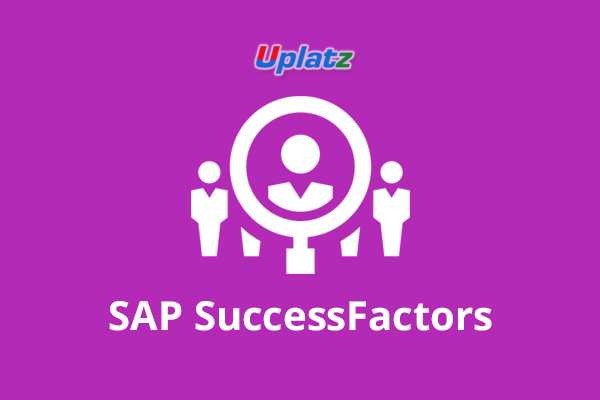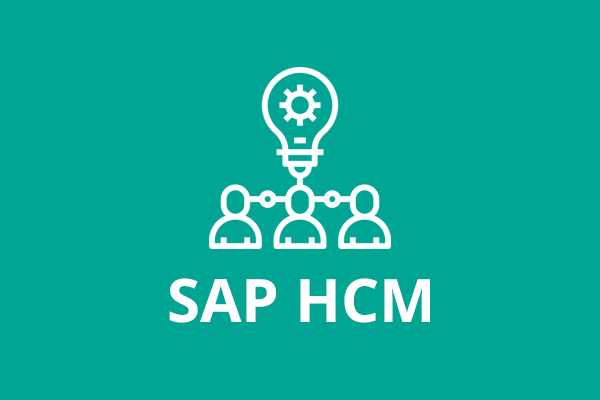SAP SuccessFactors Compensation
Learn how an organisation manages their workforce and optimises performance culture with the help of SAP SuccessFactors Compensation solution.Preview SAP SuccessFactors Compensation course
View Course Curriculum Price Match Guarantee Full Lifetime Access Access on any Device Technical Support Secure Checkout Course Completion Certificate 28% Started a new career
BUY THIS COURSE (GBP 29)
28% Started a new career
BUY THIS COURSE (GBP 29)
-
 38% Got a pay increase and promotion
38% Got a pay increase and promotion
Students also bought -
-

- SAP SuccessFactors Employee Central
- 10 Hours
- GBP 29
- 2122 Learners
-

- SAP HCM (Human Capital Management)
- 20 Hours
- GBP 29
- 2492 Learners
-

- SAP SuccessFactors Recruiting (RCM) and HXM Talent Management
- 20 Hours
- GBP 29
- 293 Learners

SAP SuccessFactors Compensation is a module within the SAP SuccessFactors suite, which is a cloud-based human capital management (HCM) software solution designed to help organizations manage their workforce effectively.
The Compensation module specifically focuses on managing employee compensation, rewards, and incentives. Create a pay-for-performance culture by tying employee performance to rewards. Influence employee pay decisions in line with company guidelines. Take the guesswork out of compensation planning to make smarter decisions about Compensation. To get attention of, motivate, and retain a skilled, diverse, and global workforce with limited budgets, organizations need to take a strategic approach to compensation planning and management. When integrated with the talent management strategy, compensation can engage employees, ignite better performance, and ensure retention of top talent. Compensation works as a motivating force for an employee to work and give their best at work. It is an investment that the organisation make to ensure the delivery of desire result.
The SAP SuccessFactors Compensation solution transforms workforce compensation into a key component of your overall talent strategy. This strategic compensation management solution enables compensation professionals, business leaders, and managers to align compensation programs with business objectives. Unlike personal productivity tools or other solutions that simply automate and streamline compensation planning, SAP SuccessFactors Compensation features a unique set of capabilities to help you model and manage competitive compensation programs and motivate your workforce. SAP SuccessFactors Compensation module helps management to plan compensation program effectively for every level of employee from higher to executive level.
Key features of SAP SuccessFactors Compensation are:
1. Compensation Planning: This feature allows organizations to streamline the process of planning, budgeting, and allocating compensation for employees. It provides tools for creating and managing compensation plans, adjusting salary structures, and distributing rewards.
2. Variable Pay: This component helps organizations design and manage variable pay programs, such as bonuses, incentives, and commissions. It enables the creation of performance-based reward structures that align with business goals.
3. Compensation Statements: Employees can view detailed compensation statements that provide a breakdown of their total compensation, including salary, bonuses, allowances, and other forms of compensation. This transparency helps employees understand the value of their compensation package.
4. Merit Increases and Promotion: The module allows for the management of merit-based salary increases and promotions. Compensation managers can define rules and guidelines for awarding salary hikes based on employee performance and other factors.
5. Integration: SAP SuccessFactors Compensation can be integrated with other modules within the SuccessFactors suite, such as Performance Management, Employee Central, and Learning Management, to create a comprehensive talent management solution.
6. Analytics and Reporting: The system provides tools for generating reports and analyzing compensation data, helping organizations make informed decisions about compensation strategy, budget allocation, and performance-related rewards.
7. Global Compensation Management: Organizations with a global workforce can use this module to manage compensation programs across different countries, currencies, and regulatory environments.
In this SAP SuccessFactors Compensation course by Uplatz, you will be able to learn the basics and introduction to how an organisation manages their workforce and optimises performance culture with the help of SAP SuccessFactors Compensation solution. You will be awarded a Course Completion Certificate by Uplatz at the end of the course.
Course/Topic 1 - Course access through Google Drive
-
Google Drive
-
Google Drive
Course/Topic 2 - SAP SuccessFactors Compensation - all lectures
-
Session 1 - SAP SF Compensation
-
Session 2 - SAP SF Compensation
-
Session 3 - SAP SF Compensation
-
Session 4 - SAP SF Compensation
-
Session 5 - SAP SF Compensation
-
Session 6 - SAP SF Compensation
-
Session 7 - SAP SF Compensation
-
Session 8 - SAP SF Compensation
-
Session 9 - SAP SF Compensation
-
Session 10 - SAP SF Compensation
-
Session 11 - SAP SF Compensation
-
Session 12 - SAP SF Compensation
-
Session 13 - SAP SF Compensation
• It provides Scalability and complete End-to-End Recruitment solutions
• Increases Job Satisfaction, Productivity, Time Management through a Planned Process
• Motivates the Workforce through Pay-for-Performance Culture to increase efficiency and productivity
• How to use all features of the SAP ALV-Grid
Compensation Mastery
• Pre-work
• Compensation Management Introduction
• Provisioning exercises
• Discovery and Kickoff
• Data Integration
• Provisioning and XML
• Comp admin tools
• Comp Mastery Salary Sheet
• Executive Review
• Multi-currency review
• Budgets
• Bonus Sheet
• Stock Options
• Reporting
• Compensation Statement
• Admin Maintenance
• Trouble shooting
• EC Integration
Get a Course Completion Certificate on successfully completing the course.
1. How do you integrate Employee Central with other SuccessFactors Products?
Employee Central integrates internal with other SuccessFactors products through HRIS Sync.
2. How do you integrate Employee Central externally with other products?
There is a cloud-based integration platform available for external integration.
3. What does the Succession Data Model contain?
The Employee Records are contained in the Succession Data Model. The succession data mode configures the fields that will appear in the Employee’s Personal Information (outside of work) Employment Information (inside of work).
4. What is configured in the Country -Specific Succession Data Model?
Address formats, country-specific fields, and international standards are set in the country-specific succession data model.
5. What does the Corporate Data Model define?
Foundation Objects and their relationships are defined in the corporate data Model. Foundation Objects are also called Foundation Tables. They include Organization, Job, and Pay.
6. What is defined in the Country -Specific Corporate Data Model?
Here foundation object fields for a separate country are defined.
7. What is the propagation data model used for?
HRIS Propagation Data Model is used for the Auto Population from Foundation Tables
8. What other two data models are used?
Data Model Workflow Rules Data Model, Event and Event Derivation Rules Data Model
9. How many data models are there in Employee Central?
There are 7 data models in Employee Central
10. How do you masked sensible data in a field?
Set the attribute pii=”true”
11. How do you set a field so the user can edit it?
Set the attribute visible=”both”
12. How do you make a field be required to be filled?
Set the attribute required=”true”
13. What is a DTD?
Document Type Definition of the data model
My vision is to build a truly integrated HR in the cloud. A truly integrated HR is the key enabler for organizations to maximize their business outcomes.
14. Why are they called ‘Success Factors’?
Because they are behaviors that lead to successful performance in the job.
15. Why are there three levels within the framework?
They describe a range of different types of behavior that are relevant to a range of different job roles. However, the levels are not hierarchical.









